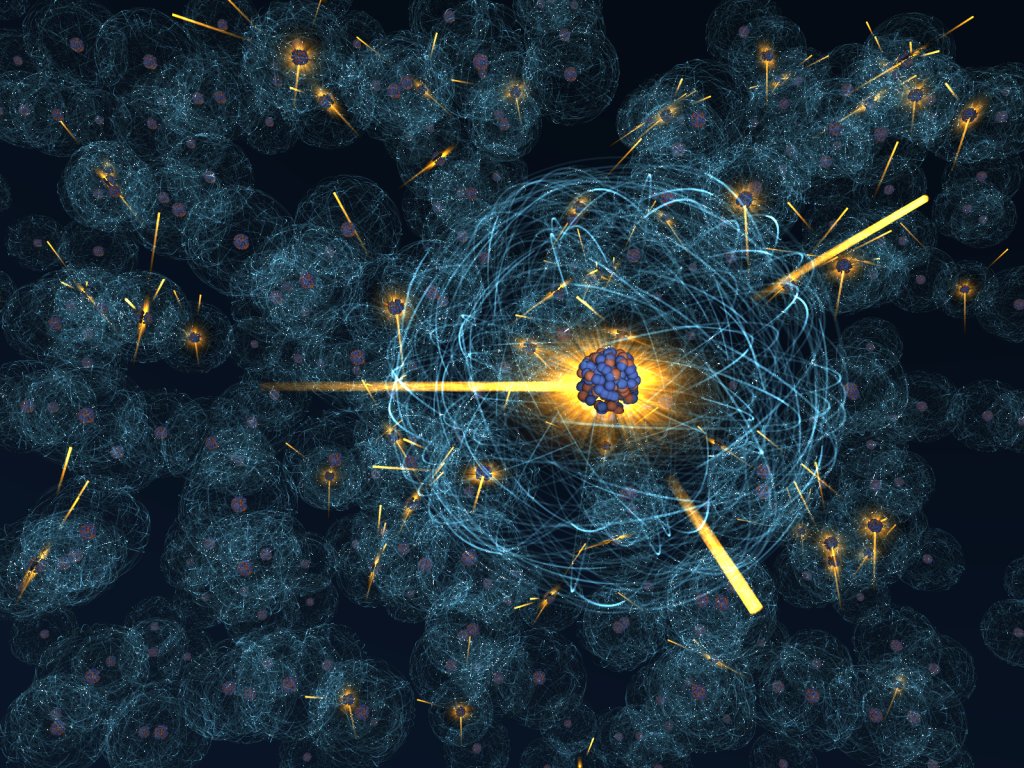Tuesday, November 30, 2010
Chain Reactions in the Sun
The sun generates energy by the converting the hydrogen in its core to helium. The details are complex, but we may content ourselves with an overview. When temperatures and pressures are sufficiently high (temperatures of about 10 million K are required) 4 hydrogen nuclei (which are protons, positively charged particles) can combine to create the nucleus of a helium atom (2 protons and 2 neutrons). Now the mass of the helium nucleus created is slightly less than that of the four protons that were needed to create it. That small difference in mass is converted into energy in the fusion process. One of the simplest fusion reactions involves the production of deuterium (a hydrogen isotope) from a proton and a neutron. When these two particles collide with enough velocity, they create a deuterium nucleus (consisting of a proton and a neutron) and the excess energy is given off as a gamma ray photon. In the sun, this process proceeds on a massive scale, liberating the energy that lights up our daytime skies. That’s a 4 ×1026 watt lightbulb up there, remember.
Fission in the Sun

On December 2, 1942, Enrico Fermi, an Italian physicist who had fled his fascistoppressed native land for the United States, withdrew a control rod from an “atomic pile” that had been set up in a squash court beneath the stands of the University of Chicago’s Stagg Field. This action initiated the world’s first self-sustaining atomic chain reaction. Fermi and his team had invented the nuclear reactor, and the world hasn’t been the same since.
Nuclear fission is a nuclear reaction in which an atomic nucleus splits into fragments, thereby releasing energy. In a fission reactor, such as the one Fermi was instrumental in creating, the process of fission is controlled and self-sustaining, so that the splitting of one atom leads to the splitting of others, each fission liberating more energy.
Nuclear fission is capable of liberating a great deal of energy, whether in the form of a controlled sustained chain reaction or in a single great explosion, like an atomic bomb. Yet even the powerful fission process cannot account for the tremendous amount of energy the sun generates so consistently. We must look to another process: nuclear fusion.
Whereas nuclear fission liberates energy by splitting atomic nuclei, nuclear fusion produces energy by joining them, combining light atomic nuclei into heavier ones. In the process, the combined mass of two nuclei in a third nucleus is less than the total mass of the original two nuclei. The mass is not simply lost, but converted into energy. A lot of energy. One of the by-products of nuclear fusion reactions is a tiny neutral particle called the neutrino. The fusion reactions themselves produce high energy gamma ray radiation, but those photons are converted into mostly visible light by the time their energy reaches the surface of the sun. Neutrinos, with no charge to slow them down, come streaming straight out of the sun’s core. The numbers that we detect give us great insight into a region of the sun that is otherwise inaccessible.
Subscribe to:
Posts (Atom)
